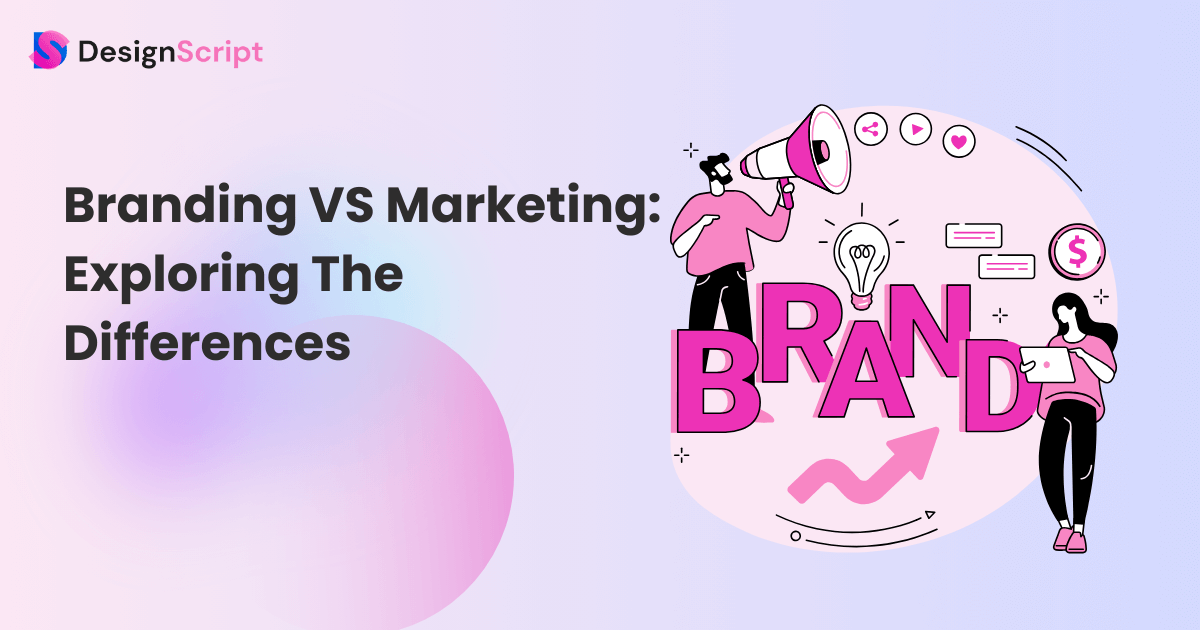Branding vs Marketing: Exploring the Differences
Companies with robust branding strategies see a 23% rise in income, and targeted marketing initiatives result in a 37% higher customer retention rate. This means the relationship between branding and marketing is essential for success in today’s tough environment.
However, differentiation between the two is a problem for many businesses, which results in slow growth and lost opportunities. If you are facing the same, don’t worry.
This blog is all about recognizing and successfully fusing branding and marketing.
We’ll provide you with practical advice on maximizing the power of branding and marketing, ultimately guiding your business toward success and profitability.
So, let’s begin.
Table of Contents
What Is Branding?

Any successful firm relies on branding, which goes beyond a simple logo to capture the core spirit of a company’s existence. It weaves the essential beliefs, purpose, and identity into a story that has an impact on the audience.
It’s not just about the products or services; it’s also about the branding and marketing strategies and emotional bond a brand creates with its clients. When done well, branding becomes an experience, a narrative in which people voluntarily participate.
A strong brand builds feelings, trust, excitement, or a sense of belonging. Customers will associate the company with a distinct and memorable identity, separating it from rivals.
This distinction encourages client loyalty, pushing them to become lifelong supporters rather than just making a purchase.
Therefore, effective branding requires investment. It increases credibility, builds trust, and shapes perceptions—all crucial elements in today’s competitive market. A great brand acts as a beam of light in the increasingly competitive digital world, pointing clients toward options they need, genuinely want, and trust.
What Is Marketing?

Marketing is like a friendly superhero for businesses! Imagine you have a new toy, and you want to tell all your friends how amazing it is. Marketing does something similar for businesses. It finds out what people like and creates ads that grab their attention, like telling your friends about your cool toy.
This superhero uses social media, ads on websites, and even in newspapers to share the exciting news about products. It’s like making new friends and showing them all the awesome things businesses have to offer. Businesses learn from what people like and change their tricks to keep things interesting and make sure everyone still loves what they’re selling.
So, marketing is like a super cool friend who helps businesses share their cool stuff with the world and make lots of new friends along the way!
Types of Marketing

Let’s look at the types of marketing,
1. Digital Marketing
Digital marketing uses the internet for ads and SEO. It gets lots of views and helps companies see what’s working.
It generates sufficient online exposure and offers valuable insights for businesses to evaluate their marketing effectiveness. This approach helps companies understand what works best in reaching their audience. In essence, digital marketing is a crucial tool for modern businesses to effectively connect with and engage their target customers in the digital world.
2. Social Media Marketing
Social media marketing uses sites like Facebook and Instagram to connect to customers.
It involves creating visually appealing and engaging posts that resonate with the target audience. The goal is not just to attract attention but also to build lasting relationships with customers. Through regular interaction, feedback, and providing valuable content, you can connect with your audience on a personal level, ultimately cultivating brand loyalty. This approach is instrumental in the digital age, where social media has become a central hub for communication and brand-consumer interaction.
3. Content Marketing
Content marketing involves sharing interesting and reliable stories to attract people. Makes customers feel connected and builds brand trust.
It goes beyond traditional sales pitches and focuses on creating content that informs, entertains, or educates, thereby drawing people in. The objective is not just to attract attention but to build a genuine connection with customers. By consistently delivering valuable and relatable content, businesses can establish brand credibility and trust. In today’s digital landscape, content marketing plays a vital role in building a strong brand-consumer relationship.
4. Outbound Marketing
Outbound marketing is old but still works. It involves calling or emailing potential clients. Works best when done carefully, especially for business-to-business (B2B) deals.
While it may not be as trendy as digital marketing, outbound marketing can be remarkably successful, particularly in B2B scenarios. When you do it with precision and personalization, outbound marketing can establish meaningful connections and trust with potential clients. It is a direct approach to communication that, when tailored to the specific needs and interests of the audience, can lead to valuable business relationships and successful B2B deals.
What’s the Difference Between Branding and Marketing?
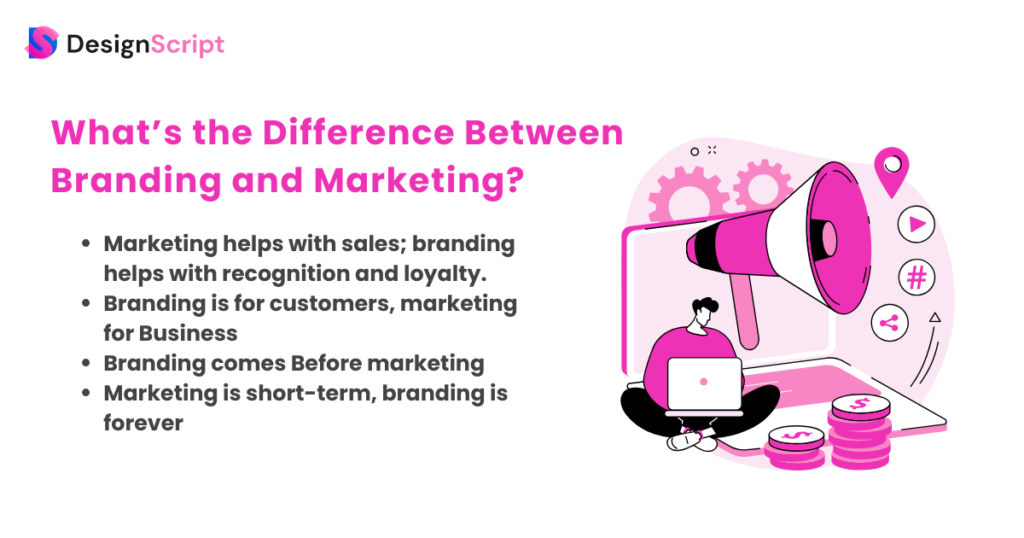
Let’s look at the differences,
1. Marketing helps with sales; branding helps with recognition and loyalty.
The fundamental goal of marketing is to increase sales through promoting products and services. It comprises all strategies and tactics to attract fresh customers and persuade them to purchase. Marketing campaigns are meant to get rapid responses, emphasizing short-term objectives like boosting sales and gaining market share.
However, branding functions at a deeper level. It involves giving the company a compelling identity. Consumers get more familiar with brands thanks to branding, which builds an emotional bond beyond products or services. Customers are more likely to purchase today and in the future because it builds consumer loyalty, trust, and community.
2. Branding is for Customers, Marketing for Business
Despite their connections, branding and marketing have separate objectives. Marketing focuses on corporate goals while highlighting product characteristics to increase sales immediately. It involves demonstrating what a product or service can achieve for the customer.
In contrast, branding is client-centered and emphasizes lasting connections. It creates an engaging narrative that conveys a company’s beliefs and mission while establishing a strong emotional connection. Customers who experience strong branding are likely to purchase and recommend the brand to others. Beyond immediate transactions, it’s about establishing a lasting bond, matching customer expectations with the company’s guiding principles, and maintaining continuous client trust and loyalty.
3. Branding comes before marketing
Having a strong brand is like having a special personality for a business. It makes the business unique and helps people remember it. When a business has a clear identity, it can tell customers what makes it special and what it believes in. This is super important for marketing because without a strong brand, ads can be confusing and not make sense to people. A strong brand makes sure marketing messages are clear and easy to remember. It’s like making friends with customers and keeping them loyal to the business for a long time!
4. Marketing is Short-Term, Branding is Forever
Marketing campaigns are quick bursts of concentrated energy that urgently target particular goals. They emphasize special offers, discounts, or seasonal promotions to generate immediate sales within a short time window. These programs are essential for timely income increases.
Branding, in comparison, is a marathon, not a sprint. It’s a long-lasting investment that will create a legacy for a company. A strong brand creates strong bonds that promote loyalty and trust. While marketing activity fluctuates in intensity, branding maintains a constant presence. It molds a company’s reputation and builds enduring bonds with its customers, ensuring that it becomes an essential component of its identity and success story.
What Are Some Similarities Between Branding And Marketing?

Let’s look at the similarities,
1. Tools and skills used
Marketing and branding both rely on the same set of abilities and resources. Experts in both industries frequently use market research techniques to understand consumer behavior, preferences, and trends. Tools for data analytics are essential for evaluating the success of marketing and branding campaigns.
In addition, graphic design, copywriting, and digital media expertise are necessary for producing engaging content, whether for marketing advertising or a campaign to promote brands. Creating words and images that connect with the target audience and encourage both short-term sales and long-term brand loyalty is a prerequisite for both professions, which need a thorough understanding of consumer psychology.
2. Imagery applied
Both branding and marketing rely heavily on imagery. For both brand awareness and marketing materials, a consistent visual identity must be created, including logos, color palettes, and design components. Using imagery, branding develops a distinctive and memorable identity that encourages consumer trust and familiarity. Similarly, marketing strategies use images to arouse feelings, tell stories, and produce instant appeal, luring clients to make a purchase. Whether a marketing advertisement or a brand logo, the imagery must be consistent, resonate with the brand’s identity, and draw in potential buyers.
3. Strategies used
Strategic planning is used by branding and marketing to accomplish their objectives. In branding, strategic positioning is essential for determining how a brand wants to be viewed by consumers. Effective placement of products or services to satisfy customer wants and outperform rivals is also a component of marketing tactics. Common strategies used in branding and marketing initiatives include using social media, content marketing, influencer alliances, and public relations. The brand identity is maintained when a consistent message is created across different tactics, increasing the overall efficiency of branding and marketing operations.
How do Marketing and Branding Work Together?
Marketing and branding work together like a super team for businesses to become successful. They join forces and make things happen, just like a group of friends helping each other out.
It’s like having the right moves in a dance – they complement each other and create a strong impact, making businesses popular and loved by people.
By promoting products or services and using techniques to draw in and convert clients, marketing helps to generate instant sales.
However, branding creates the groundwork for these marketing initiatives. It lays out a company’s identity, beliefs, and promises while developing a strong emotional bond with the audience. Marketing needs depth, which a great brand gives it. Selling isn’t just about selling a product; it’s also about selling an experience and a narrative.
When properly incorporated, branding directs marketing activities. Consistent brand messaging serves as the focal point of marketing initiatives, ensuring that each promotion, public service announcement, and social media post aligns with the brand’s fundamental aspects.
The brand message is then amplified via marketing. It communicates the company’s values and promises through various platforms and campaigns, reaching a larger audience and enhancing brand recognition.
Additionally, branding gives marketing a lengthy shelf life. While marketing strategies may alter with the seasons and fashions, a strong brand endures and builds client loyalty over time.
In essence, branding creates permanent relationships, whereas marketing promotes immediate transactions. Together, they produce a comprehensive strategy that strengthens the company’s position in the hearts and minds of its audience while increasing sales and developing emotional connections.
3 Powerful Branding and Marketing Stories
Here are a few branding and marketing stories of companies,
1. Apple Inc.
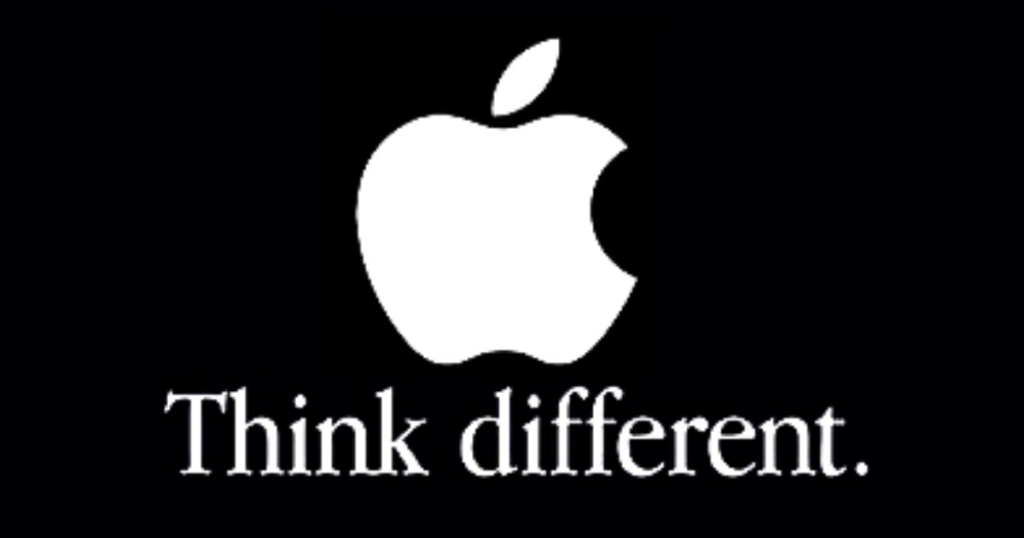
The seamless fusion of branding and marketing is the foundation of Apple’s unrivaled success. Their products are designed creatively and simply, reflected in their brand identity.
Their marketing techniques are built around this distinct brand message. Apple strengthens its brand image and connects with customers worldwide with its slick designs and persuasive marketing strategies. Their marketing strategies highlight their dedication to innovation and build a compelling story that engages viewers.
The importance of a flawless brand-marketing relationship can be seen in how Apple’s goods have evolved from mere gadgets to famous symbols of innovation and sophistication thanks to the synergy between branding and marketing.
2. Nike
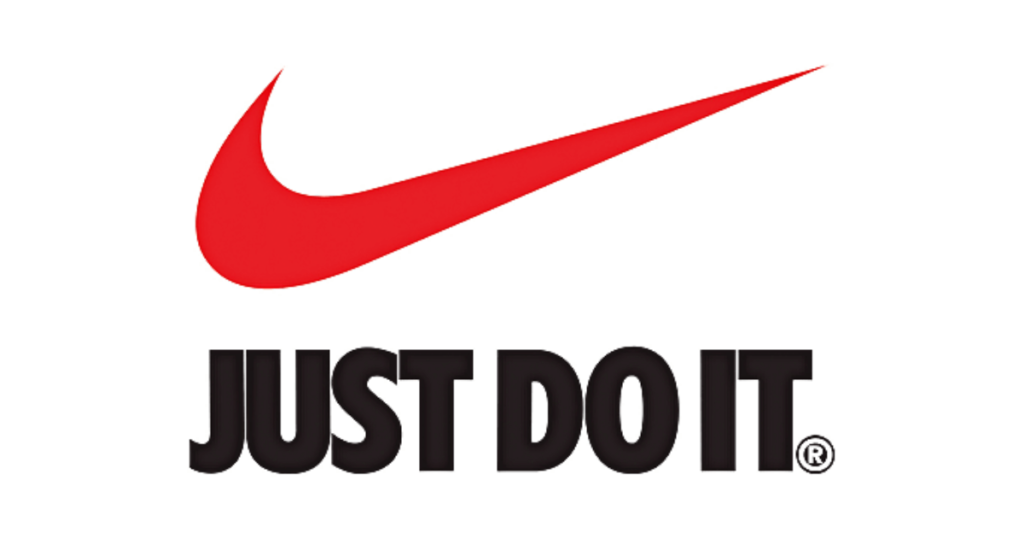
Nike’s “Just Do It” marketing campaign is a shining example of excellent branding and marketing. This catchphrase is renowned for going beyond simple words to capture a mood of empowerment and tenacity.
Nike made this saying a global slogan by using emotionally charged advertising and clever marketing techniques, motivating millions to push their limits. Along with connecting with consumers, this campaign strengthened Nike’s brand identity.
It became more than just a shoe firm; it became a motivational, aspirational, and triumphant image. Nike made a lasting impression by seamlessly merging their marketing techniques with their core brand message. This demonstrated the power of combining branding and marketing for a meaningful and long-lasting market presence.
3. Coca-Cola
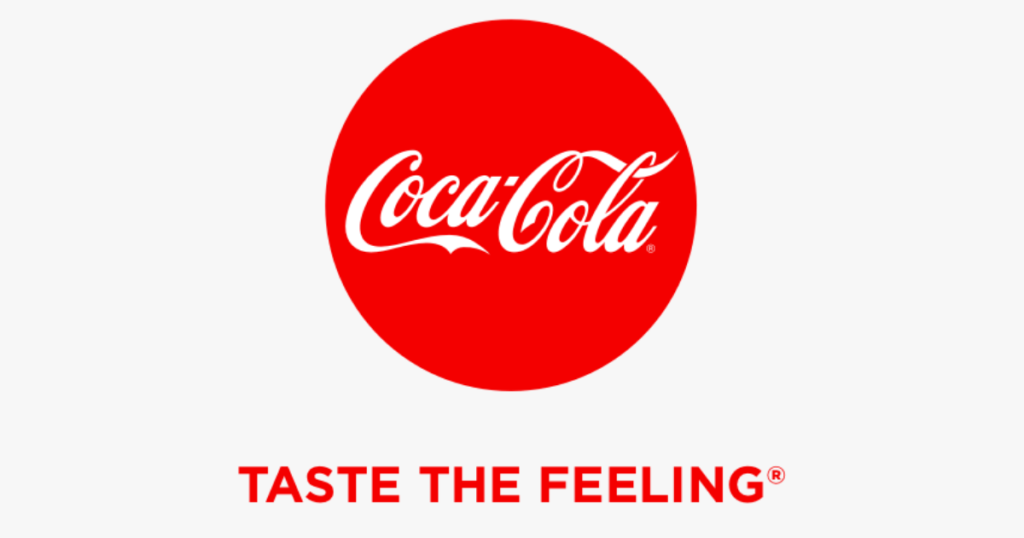
The secret to Coca-Cola’s successful branding is its enduring message of joy and shared experiences, which creates a solid emotional connection with customers. Their marketing initiatives wonderfully amplify these brand values during the holiday season.
Coca-Cola appeals to people’s need for joy and community with catchy commercials and joyful marketing. They sell more than just drinks when they emphasize the pleasure of sharing; they also sell feelings and experiences.
This ongoing link between branding and holiday advertising builds a robust and endearing relationship with individuals worldwide.
Coca-Cola satisfies thirst and feeds the spirit, demonstrating the significant effect of seamlessly incorporating brand values into marketing techniques and encouraging consumer joy and unity.
Create A Captivating Brand Story For Long-Term Business Success!
In the business world, becoming a branding and marketing guru is equivalent to finding the secret to success. They make a great team that is necessary for any business to succeed. While marketing promotes quick sales, branding fosters recognition and loyalty over the long term. The secret is to combine the two, creating a compelling story that draws in customers. Businesses can prosper and stand out in the market by embracing the symbiotic relationship between branding and marketing. So, always remember to integrate carefully, connect fully, and leave a lasting impression on your audience to ensure your company’s success for years to come.
FAQs
Marketing and branding are measured differently. Sales statistics, click-through rates, and conversion rates are common marketing indicators. In contrast, branding metrics emphasize qualitative, long-term measures like brand perception, customer loyalty, and brand awareness.
Absolutely. Consistent branding and planned marketing initiatives greatly influence customers’ perceptions of a brand. Trust, loyalty, and favorable brand connections are all increased by pleasant brand experiences through branding and marketing.
Both are equally significant because they provide different functions. Marketing increases sales and advertises products, while branding builds a brand’s identity and encourages consumer loyalty. A great business plan must take a balanced approach that incorporates both.

